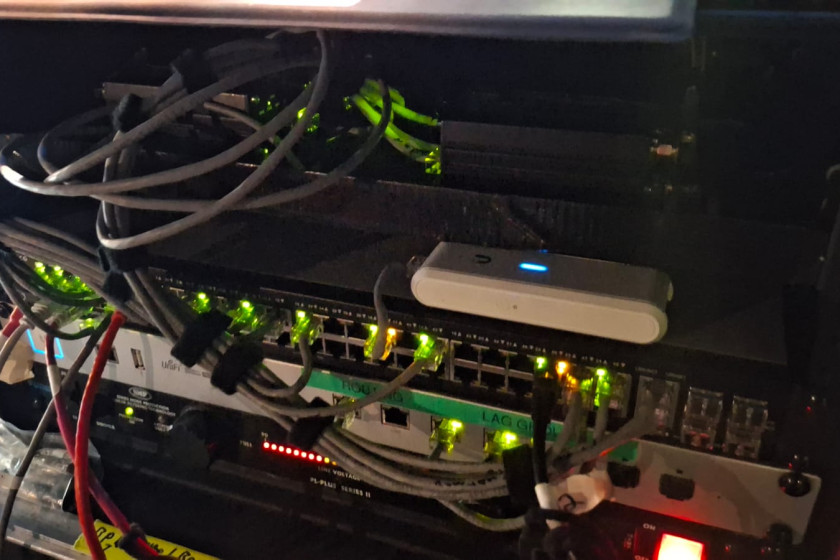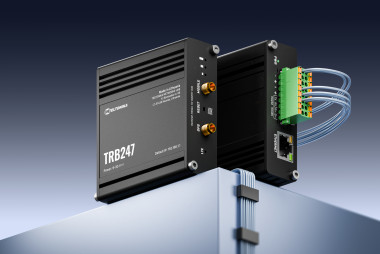Understanding the eSIM Technology and Unlocking Its Power with RMS
#2025, #teltonikanetworks, #news, #rms
The integration of eSIM has revolutionized connectivity, offering unparalleled flexibility and convenience by eliminating the need for physical SIM cards. However, having an eSIM-enabled device is only part of the story.

The true value and utility of eSIM largely depends on how it is implemented, as not all eSIM devices are created equal. This article will delve into the nuances of eSIM standards and demonstrate why robust and intelligent implementation is paramount, especially for professional users.
Breaking Down eSIM Standards: SGP.22 vs. SGP.32
The GSMA, a global organization representing mobile operators, defines various technical specifications for eSIM. Among the most prominent are SGP.22 and SGP.32.
SGP.22: This specification defines the architecture and operational framework for consumer eSIMs, predominantly used in devices like smartphones, tablets, and wearables.
SGP.22 primarily supports a user-initiated "pull" mechanism for profile management, where users download and activate profiles through device interfaces (e.g., scanning a QR code or using an app). Its widespread adoption makes it a highly popular and compatible standard across a vast range of devices and service providers.
SGP.32: Emerging as an evolution of SGP.22, SGP.32 is specifically designed for Internet of Things (IoT) and enterprise applications. It introduces significant advancements, including server-initiated "push" profile management, allowing network operators to remotely manage and update profiles without requiring direct user interaction.
This feature is crucial for large-scale IoT deployments, devices with limited user interfaces, and scenarios demanding bulk profile management and seamless profile switching.
The Critical Difference: eSIM Implementation Matters
The presence of an eSIM alone doesn't guarantee a convenient or efficient user experience. The how of its implementation drastically impacts usability and operational value. Consider two hypothetical 5G router manufacturers:
Company A takes a thoughtful, user-centric approach. Their eSIM-enabled 5G router supports multiple ways to manage profiles, including uploading QR codes through a web interface, entering activation codes manually, and switching between profiles using a remote management system. This flexible approach makes it easy to deploy and manage devices at scale or in environments with limited physical access.
Company B, on the other hand, takes a bare-minimum approach. While their 5G router also includes eSIM functionality, it only allows profile changes via a Command Line Interface (CLI), requiring users to type in activation strings manually. There is no web interface and no remote management capabilities.
The contrast is clear: both companies offer eSIM on paper, but the real-world usability and scalability differ significantly. Company A delivers a robust, intuitive experience with remote capabilities, while Company B’s solution feels rigid and outdated, especially in professional or large-scale applications.
This highlights a critical point: not all eSIMs devices are equal. The implementation details dictate ease of use, flexibility, and real operational value for the customer.
Compatibility and Advanced Management, Teltonika’s Way
While SGP.22 is often referred to as a "consumer" standard, its popularity and broad compatibility make it an excellent foundation. We have strategically implemented the SGP.22 standard in our hardware, ensuring maximum compatibility with the vast majority of eSIM service providers. This means that if a provider offers eSIM services, there's a high probability it will be compatible with our devices.
However, recognizing the sophisticated needs of professional users, we have gone beyond the basic SGP.22 implementation. We understand that professional environments demand robust, large-scale remote management capabilities, features more commonly associated with the newer SGP.32 standard. To address this, we have integrated comprehensive remote profile management and swapping functionalities through the Remote Management System (RMS).
This unique combination allows us to leverage the widespread compatibility of SGP.22 while providing advanced, centralized, and remote control over eSIM profiles. In essence, we have implemented the most compatible format (SGP.22) and enhanced it with full, large-scale remote management capabilities, mirroring and in some cases exceeding, the benefits of server-initiated management.
It's important to clarify this distinction, as there's a common misconception in the market that SGP.22-based solutions inherently lack remote management capabilities. That’s not the case with our implementation. What we created is the best of both worlds: the wide compatibility of SGP.22 with the remote management power of SGP.32.
Teltonika eSIM Routers: Real Versatility for Professionals
From compact LTE routers to dual-modem 5G powerhouses, Teltonika offers a range of eSIM-capable devices designed with real-world deployment in mind. Models like the RUTM52, RUTC50, RUTM30, RUT951 PoE+, RUT241 and ATRM50 are just a few examples that reflect our commitment to delivering not only eSIM compatibility but also professional-grade functionality.
Whether you're managing a global fleet, setting up remote installations, or deploying mission-critical infrastructure, these devices support remote profile control, streamlined provisioning, and centralized management via RMS — ensuring that eSIM isn't just a checkbox, but a tool that truly works for you.
Interested in ordering or finding the best eSIM router for your infrastructure with eSIM functionality? Reach out by clicking below and get a personalized consultation!


